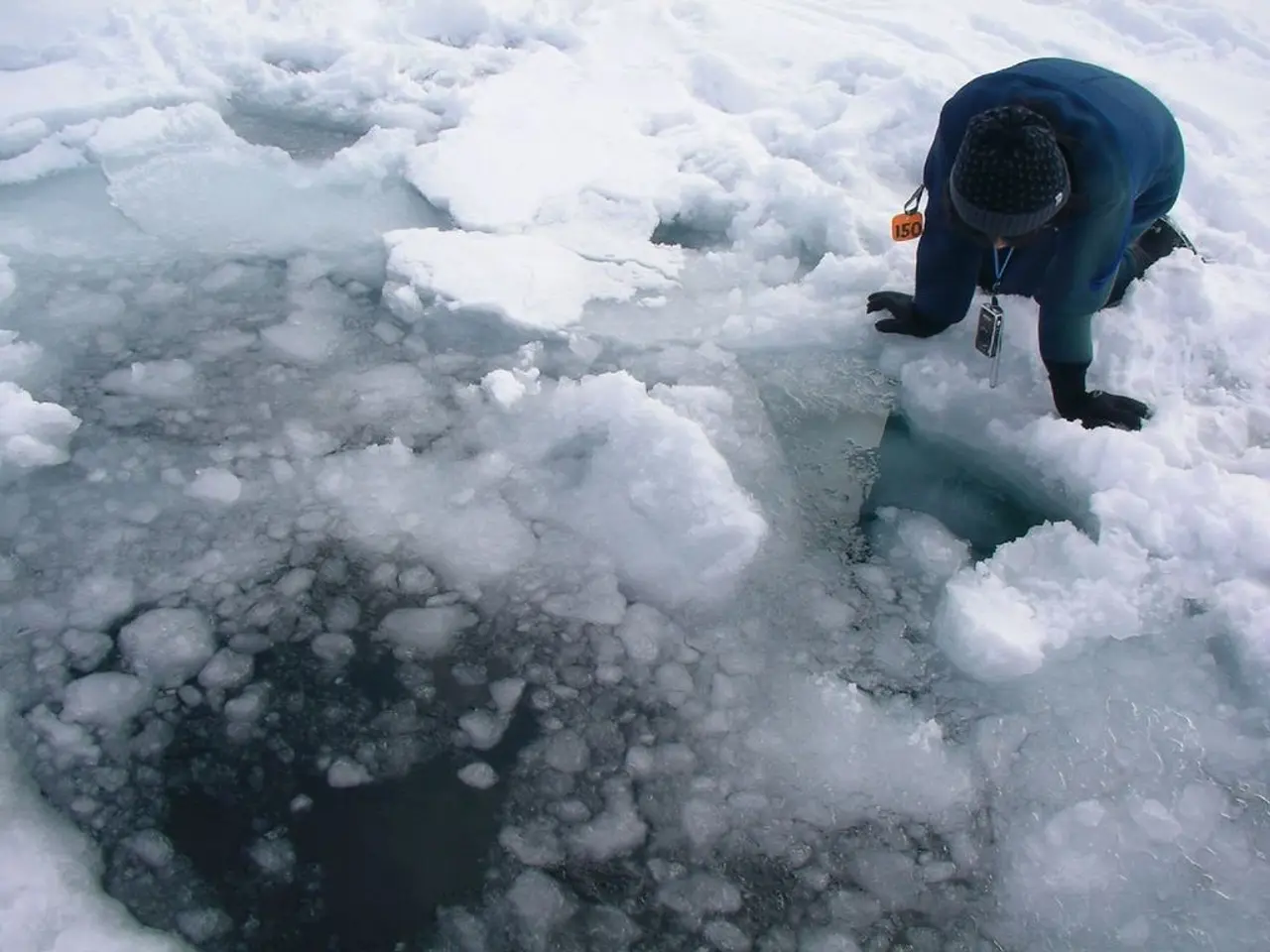Applying Ice Packs to Ligament Injuries: A Handbook for Caregivers
================================================================================
In the realm of sports injuries, ligament injuries are a common occurrence, often resulting from sudden movements or accidents. These injuries can cause pain, swelling, and affect mobility. One effective method for managing the symptoms of ligament injuries is ice therapy, a simple yet powerful tool for pain relief and inflammation reduction.
Ice Therapy: A Barrier and a Timeframe
When using ice for ligament injuries, it's essential to take precautions. Always place a cloth or thin towel between the ice and your skin to prevent frostbite or skin damage. Never apply ice directly to skin. Limit each icing session to 15–20 minutes, as prolonged exposure increases the risk of cold injury. Repeat the icing every hour as needed, but do not exceed 15–20 minutes per session to ensure tissue safety and allow skin temperature to return to normal.
Elevation and Rest
Keeping the injured ligament elevated above heart level can enhance fluid drainage and further reduce swelling. Rest is vital for recovery, so remind the injured person to take it easy and avoid putting undue pressure on the injured ligament.
Timing is Key
Ice is most effective within the first 24 to 48 hours following the injury, targeting acute inflammation and swelling. After this period, the focus should shift towards promoting healing and mobility.
Combining Ice Therapy with the R.I.C.E. Method
Ice therapy should be used in conjunction with rest, compression (e.g., elastic bandage), and elevation (the R.I.C.E. method) for optimal ligament injury treatment.
Study Findings
A recent study aimed to find out if using cold therapy after ACL surgery was helpful. The study divided patients into four groups: cooling pad (very cold), cooling pad (less cold), ice packs, and no cold treatment. The study found no big differences in how long patients stayed in the hospital, how well they could move their knee when they left, or how much pain medicine they needed. However, the study did show that both ice packs and cooling pads made the knee colder, but they didn't make a big difference in early recovery from ACL surgery.
Safety First
If the pain or swelling worsens, or if the injured person experiences numbness or tingling, seek medical attention. If there's trouble bearing weight on the injured limb or if there's an open wound at the injury site, seek medical attention immediately.
Alternatives to Ice Packs
Using frozen vegetables, like peas or corn, can be an alternative to an ice pack and conform better to the body's contours.
Applying ice following these guidelines promotes pain relief, limits inflammation, and supports healing while minimizing risks associated with cold therapy.
Read also:
- Is it advisable to utilize your personal health insurance in a publicly-funded medical facility?
- Dietary strategies for IBS elimination: Aims and execution methods
- Benefits, suitable dosage, and safety considerations for utilizing pumpkin seed oil in treating an overactive bladder
- Harmful Medical Remedies: A Misguided Approach to Healing




